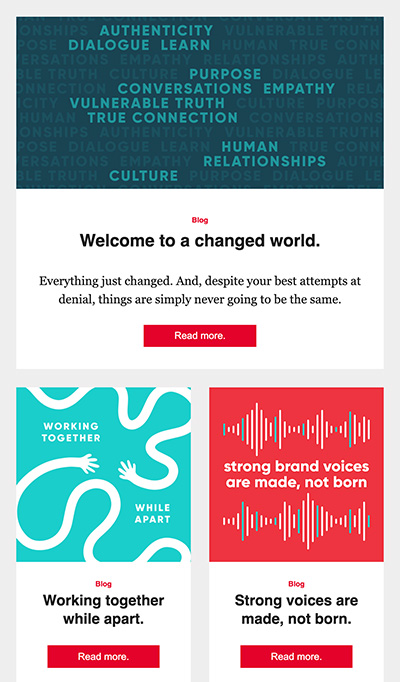Eight steps to a customer movement.
How can you turn your customers into your greatest form of media? We’ve put down eight steps to get there.

Control. Marketers struggle for it. But it’s elusive. It cannot be created. It cannot be defended. Any semblance of control is merely an illusion. Why?
Because you don’t own your brand, your customers do. And you don’t control media, your customers do.
The first part of that has always been true. The second part is a new reality.
An expensive and effective media blitz is deemed useless if the opposite becomes true on social networks. Or customer rating services. Or in word of mouth.
How can you turn your customers into your greatest form of media? It’s not easy by any stretch. It takes time and patience, but there’s no time like the present to start. We’ve put down eight steps to get there.
1. Listen to your customers – all of them.
We are often shocked at how little our clients have listened – really listened – to their customers. What do they love about you? What do they hate about you? What do they say about you behind your back and to one another? Where do they say it? This vital information is easy to get, yet so many skip this step. But currently, this IS your brand. By listening now, you are better equipped to arm them later.
2. Listen to your detractors.
While no brand should exist to please everyone, we cannot overemphasize the importance of understanding what some don’t like about you. One loud negative can be more powerful than ten positives, so putting your head in the sand is not a good strategy. Listen to them – and be ready to change as a result.
3. Find the spark.
In everything you heard, what was a common thread? What was the passionate spark that your customers love about you? What is the story that they can take and easily repeat? This spark is not elusive. It just needs to be unearthed. And this needs to be made into the basis of your brand.
4. Reconsider how you communicate.
If you’ve always used mass media on the pay and pray theory, we’re not telling you it’s wrong. It’s just wrong if not done in conjunction with a broader strategy that includes social, PR, and more grassroots efforts.
5. Create active participation.
Turn brand interactions into two-way conversations. Ask questions in social. Create simple contests. Give your customers something to do or to react to. No longer can you be passive.
6. Fulfill the promise.
It probably goes without saying – but it shouldn’t. You can’t create a movement unless you are fulfilling the promise of the brand. We’ve worked wonders from a brand perspective only to be thwarted by operations. Or by an internal decision that shouldn’t have happened. This isn’t a campaign. It is a long-term commitment to your customers. Fulfill the promise in obvious ways – but also in unexpected ways. A charitable gift aligned with your promise. A program for students that mirrors your philosophy. An internal movement that shows your company’s commitment and passion.
7. Keep listening.
Don’t just listen once. Listen constantly. Keep surveying. Keep focus grouping. Keep mystery shopping. Keep monitoring reviews. Keep monitoring PR. Knowledge is power, and ignorance is disaster.
8. Stay on course.
This is about commitment in all of its forms. To the brand promise and nurturing the spark. To your customers and everywhere they are. To your own decisions and how they’ll add to or subtract from your mission. Commitment is what separates average brands from extraordinary ones.
Daunting? Sure. Doable? Absolutely. But this is more than a mere direction to head in. It is a long-term strategy that must have the commitment of the entire organization – starting at the very top. But it’s a strategy that will create short-term success while laying the foundation for long-term exceptionalism. Good luck.


